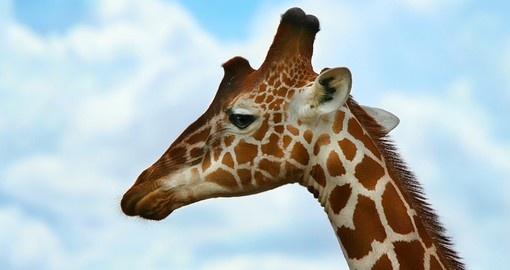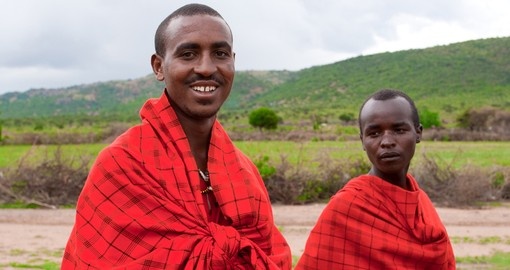Kenya History
Archaeological remains consisting of human skulls found in the Lake Turkana area of Kenya date back to around two million years ago making them some of the earliest human beings ever discovered. During the New Stone Age, waves of migration to Kenya came from all over Africa, some beginning as early as 2000 BC. The Turkanas people arrived from Ethiopia, the Kikuyu, Akamba and Meru came from Western Africa, while the Maasai, the Luo and Samburu arrived from the southern part of Sudan.
The 8th century AD witnessed the arrival of traders from Arabia, Persia and China. They introduced the tribal communities of Lamu, Mombasa and Malindi to Muslim culture and traded gold, ivory, skins, rhino horns, spices and slaves. These traders eventually intermarried with the local communities they encountered resulting in the formation of a new civilisation that was part African and part Arabic which is now known as Swahili.
During the 16th century, the Portuguese arrived in Kenya, establishing a stronghold in Mombasa. They maintained control there for two hundred years, staving off battles with the Arabs and the Turks. By the beginning of the 18th century, Omani Arabs managed to remove the Portuguese from power, however, it wasn’t long before the coast was again under the control of another European power - the British. In 1886, Africa was divided between European powers and in 1895, Britain’s protectorate was officially named British East Africa. A railroad was built between Mombasa and Lake Victoria which saw large groups of settlers arrive, forcing tribal communities onto reserves.
By 1952, tensions were high in Kenya culminating in the Mau Mau Uprising led by the Kikuyu people who came together under the title Kenya Land Reform Army. The uprising was a war of attrition against white people, property owners and collaborators, resulting in frequent attacks against white farms and government outposts. The rebels were defeated in 1956. The British planned for independence in December 1963 which included grants and loans which would help the Kenyan Assembly to buy out European farmers, enabling the land to be returned to the tribes. While the run-up to independence was relatively smooth, the transfer of lands was not, causing a decline in agricultural production that Kenya never fully recovered from.
Jomo Kenyatta became Kenya’s first Prime Minister from 1963-1964 and then was named President in 1964. Under Kenyatta, Kenya became one of Africa’s most stable and prosperous nations with a growing economy. His time in power was relatively peaceful and Kenya was admitted into the United Nations. Although Kenyatta is seen as the founding father of the Kenyan nation, his leadership was not without controversy. He tended to favour his own tribe and was paranoid about dissent which led to corruption. Instead of a fully unified Kenya, the country became (and remains) a confederation of competing tribes.
Kenyatta was succeeded by his vice president Daniel Arap Moi in 1978. Moi ruled in virtual autocracy for nearly twenty-five years, becoming one of the richest men in Africa. Despite their personal success, his rule is known as a time of corruption, censorship and nepotism. In 2002, he announced his retirement. Twelve opposition parties and religious groups united under the umbrella National Alliance Party of Kenya which became the National Alliance of Rainbow Coalition (NARC). After much infighting, they eventually became a dynamic and unified party claiming a peaceful landslide.
The end of 2007 saw elections that resulted in violence across the country because of disputed election results between the NARC and the Orange Democratic Movement (ODM). International mediators led by former UN Secretary-General Kofi Annan were called in. An agreement was reached making Kibaki (the NARC leader) President and Odinga (ODM leader) the Prime Minister. Since the election riots, the government and civil society organizations created programmes with the goal of preventing similar situations in the future.
A new constitution was put into place in 2010 which called for more power at a local government level as well as a bill of rights. The event was praised by the international community. Today, Kenya remains one of the foremost tourist destinations in Africa due to its natural attractions like the “Big Five” and Nairobi - Kenya's capital and arguably the most modern city in East Africa.
Kenya Travel Information
At Goway we believe that a well-informed traveller is a safer traveller. With this in mind, we have compiled an easy-to-navigate travel information section dedicated to Kenya.
Learn about the history and culture of Kenya, the must-try food and drink, and what to pack in your suitcase. Read about Kenya's nature and wildlife, weather and geography, along with 'Country Quickfacts' compiled by our travel experts. Our globetrotting tips, as well as our visa and health information, will help ensure you're properly prepared for a safe and enjoyable trip. The only way you could possibly learn more is by embarking on your journey and discovering Kenya for yourself. Start exploring… book one of our Kenya safaris today!
Extend Your Trip
After your African Safari, why not consider one of Goway's Europe tours or Egypt tours en route from Kenya or perhaps a stopover in Dubai on one of our United Arab Emirates tours
Book your Kenya safari with Goway!
 AfricaExperts is the exclusive division of Goway that specializes in planning and organizing Kenya safaris and experiences. Choose from a locally escorted tour, an exclusive African game lodge, a stay of distinction, a small group tour and more. We want to be your first choice when next you go globetrotting to Kenya.
AfricaExperts is the exclusive division of Goway that specializes in planning and organizing Kenya safaris and experiences. Choose from a locally escorted tour, an exclusive African game lodge, a stay of distinction, a small group tour and more. We want to be your first choice when next you go globetrotting to Kenya.
Get a Trip Quote Order a Brochure



















